
Palmaria palmata, also called dulse, dillisk or dilsk, red dulse, sea lettuce flakes, or creathnach, is a red alga (Rhodophyta) previously referred to as Rhodymenia palmata. It grows on the northern coasts of the Atlantic and Pacific Oceans. It is a well-known snack food. In Iceland, where it is known as söl, it has been an important source of dietary fiber throughout the centuries.

Ceramium is a genus of Ceramium algae. It is a large genus with at least 15 species in the British Isles.
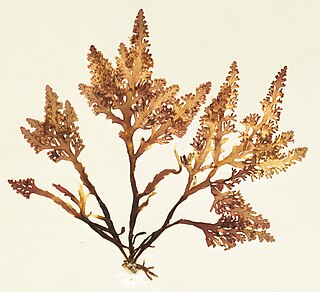
Osmundea pinnatifida is a species of red alga known by the common name pepper dulse.

Polysiphonia lanosa is a common species of the red algae (Rhodophyta) often to be found growing on Ascophyllum nodosum.
Polysiphonia atlantica is a small filamentous species of red marine algae Rhodophyta. The thalli form small tufts up to 3 cm long. The axes are ecorticate consisting of axial cells surrounded by four periaxial cells.
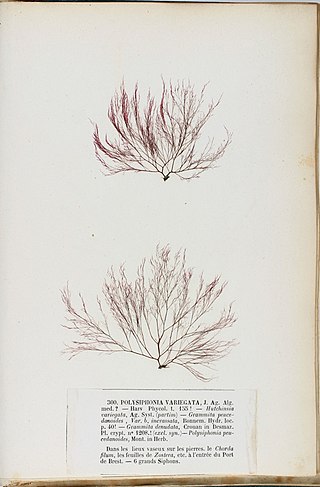
Polysiphonia denudata is a small red alga, Rhodophyta, growing as tufts up to 20 cm long without a main branch axis.
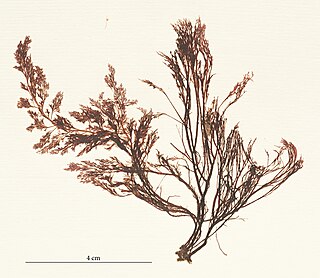
Polysiphonia elongata is a small red marine algae in the Rhodophyta.

Melanothamnus harveyi, Harvey's siphon weed, is a small marine red alga in the division of Rhodophyta.
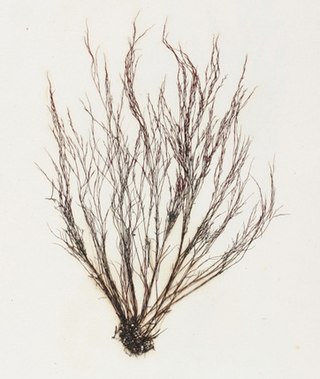
Polysiphonia nigra is a species of marine alga in the division Rhodophyta.
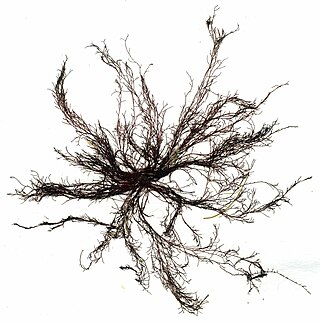
Polysiphonia stricta is a small red marine alga in the Division Rhodophyta.
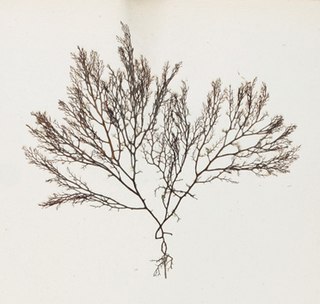
Vertebrata fruticulosa(Boergeseniella fruticulosa Kylin) is a small marine alga in the Division Rhodophyta.
Vertebrata thuyoides is a small marine algae in the Division Rhodophyta.
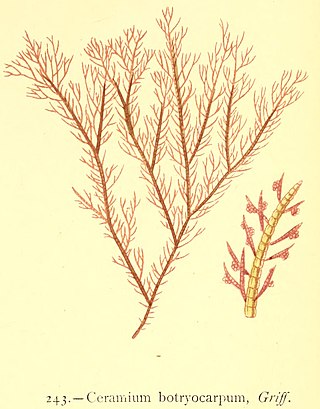
Ceramium botryocarpum is a small red marine alga in the Division Rhodophyta.

Ceramium gatitanum is a small marine red alga.
Ceramium pallidum is a small marine alga. It occurs in waters off of Europe and Africa (Morocco).

Ceramium shuttleworthianum is a small marine red alga.
Brongniartella byssoides Schmitz is a small red marine alga.

Membranoptera alata is a small red alga in the Rhodophyta.

Hypoglossum hypoglossoides, known as under tongue weed, is a small red marine alga in the family Delesseriaceae.

Delesseria sanguinea is a red marine seaweed.















